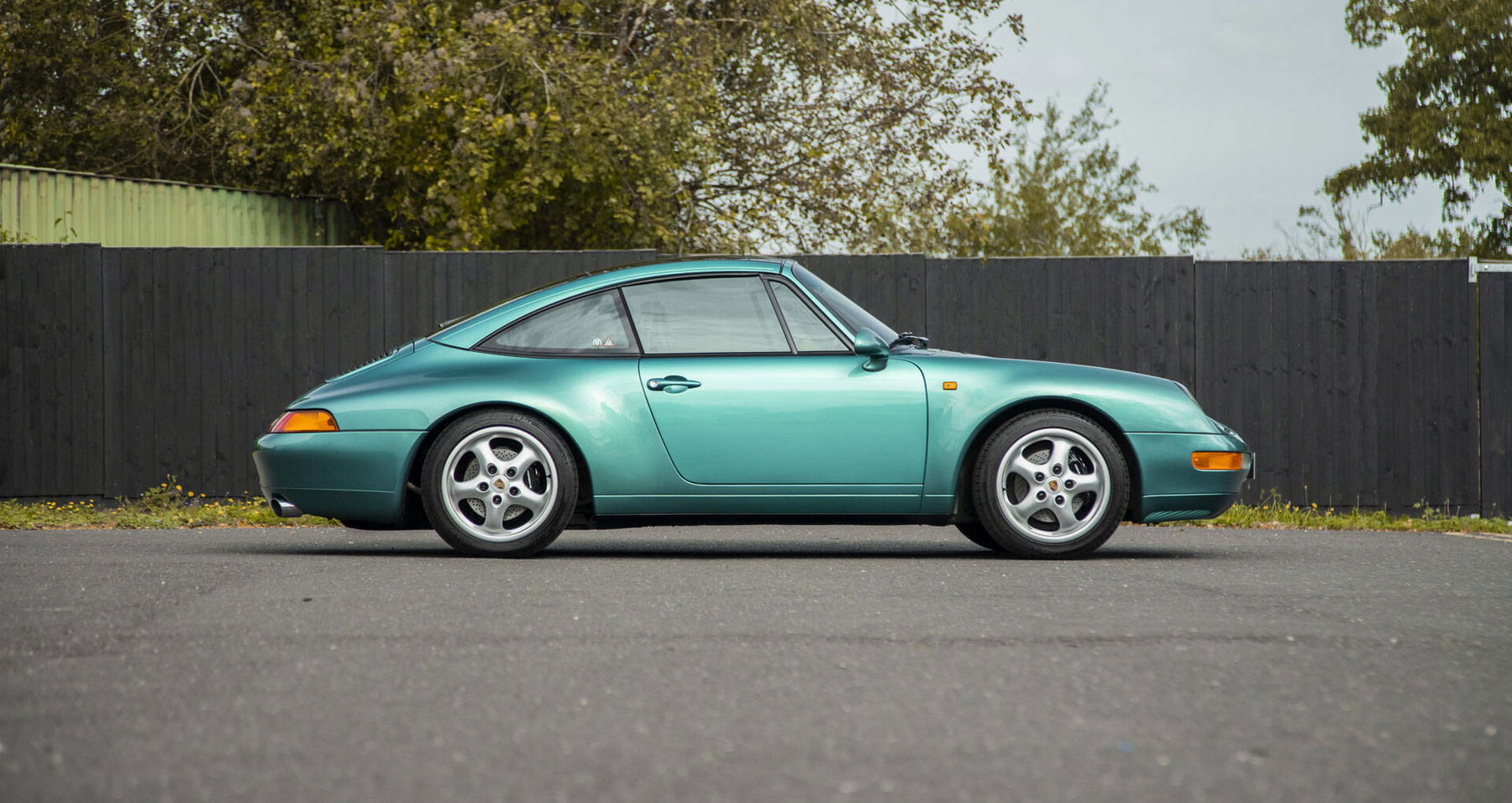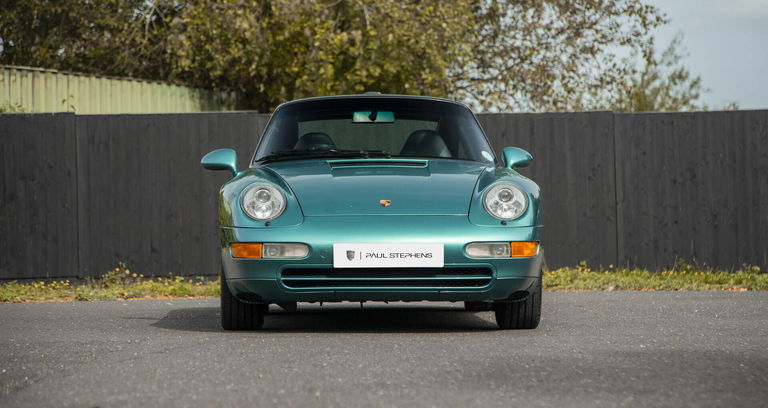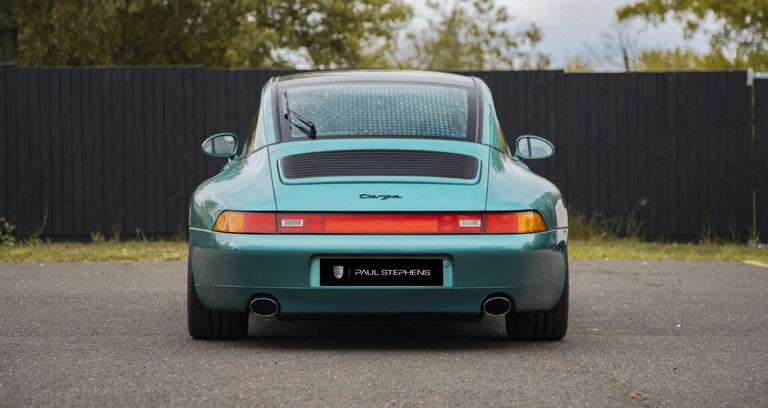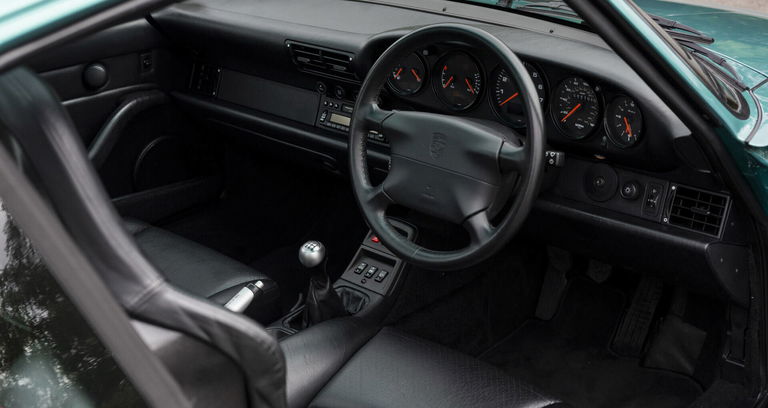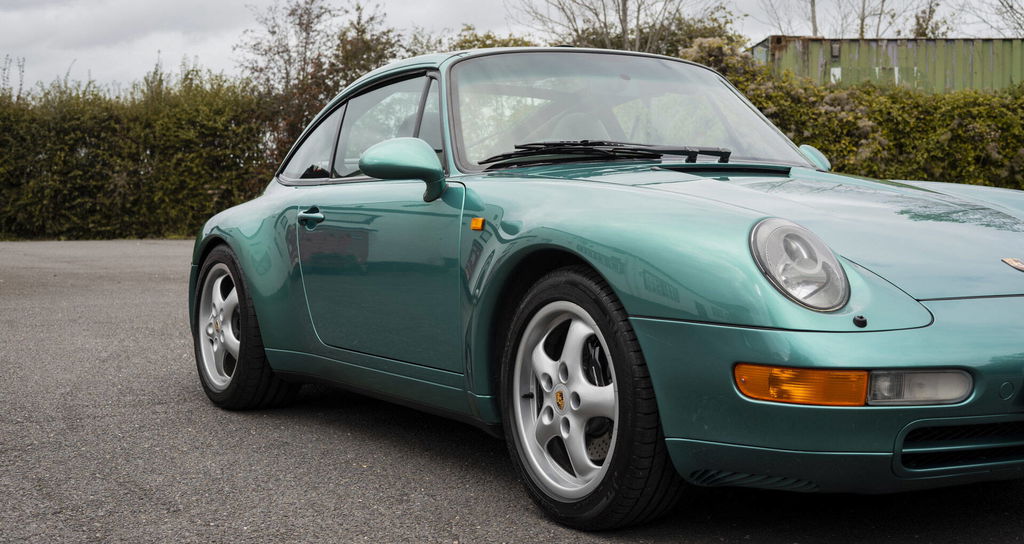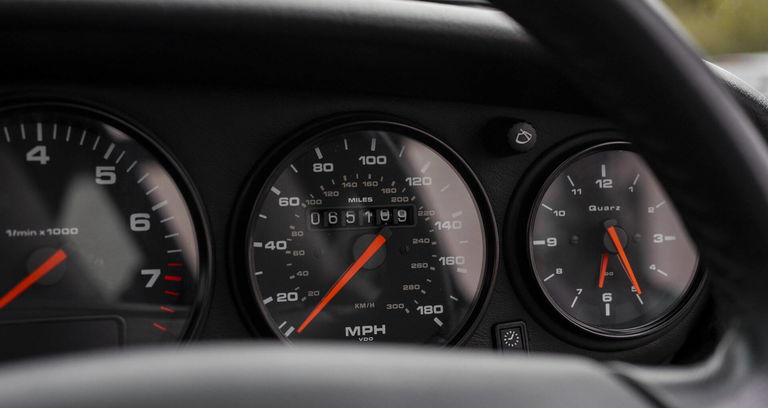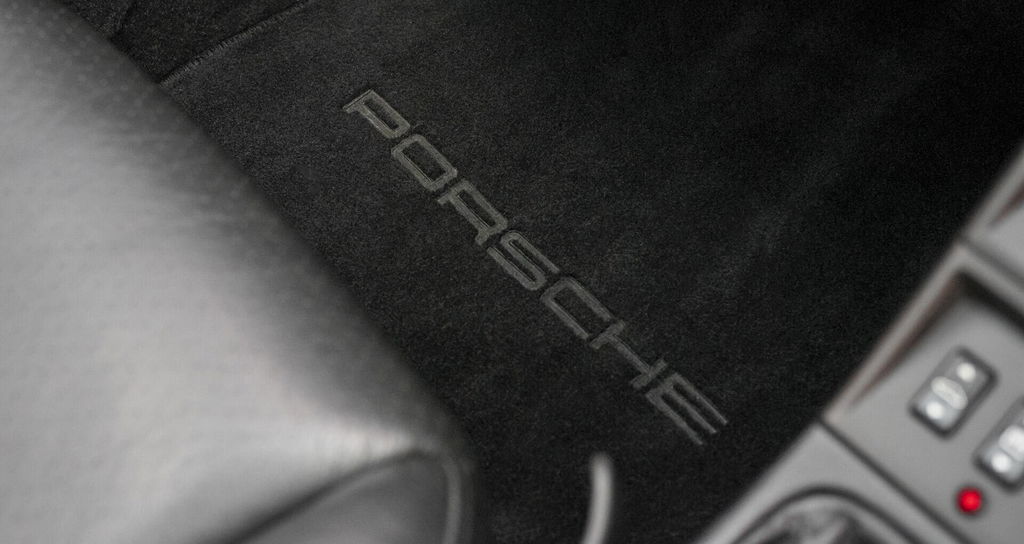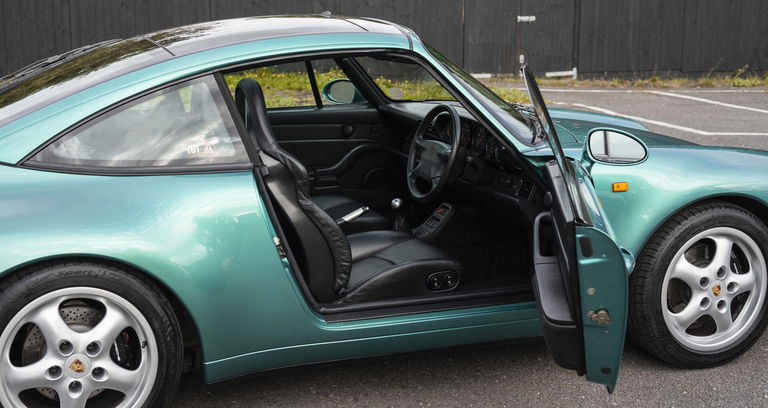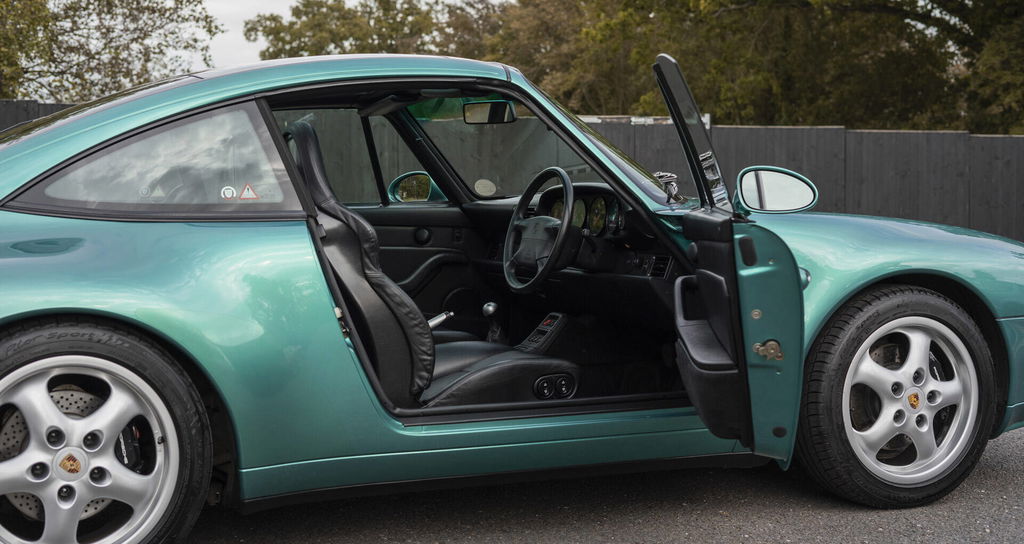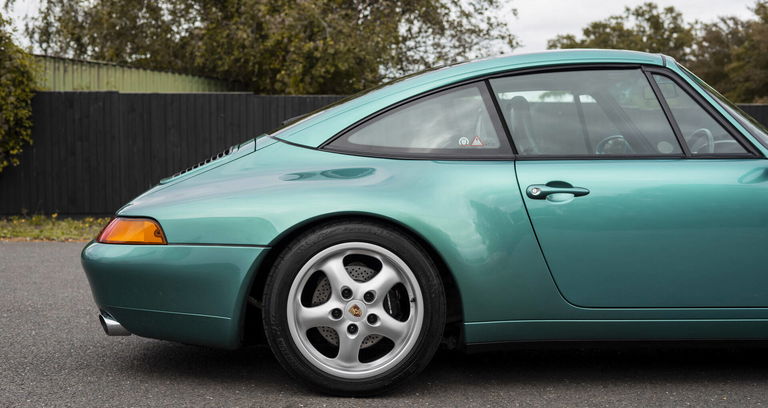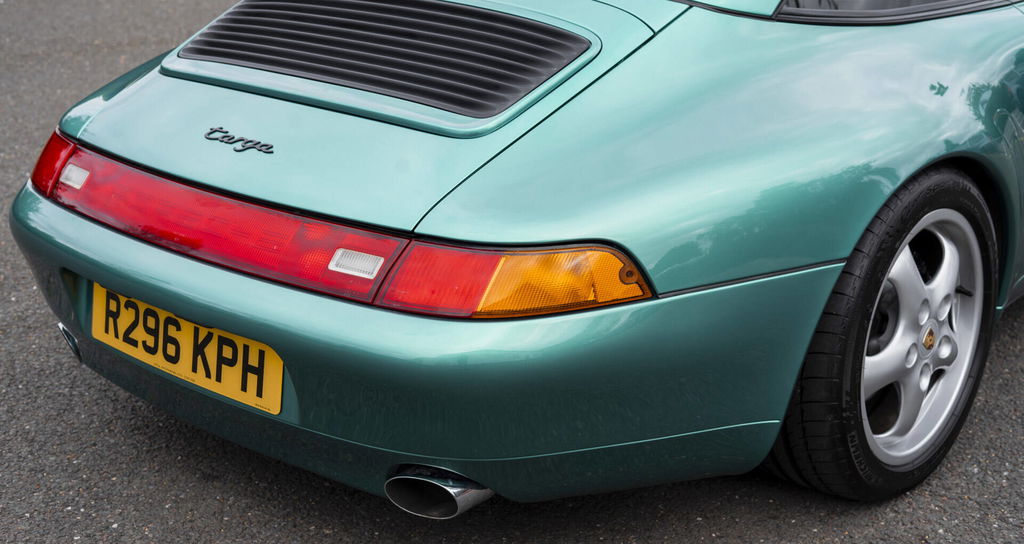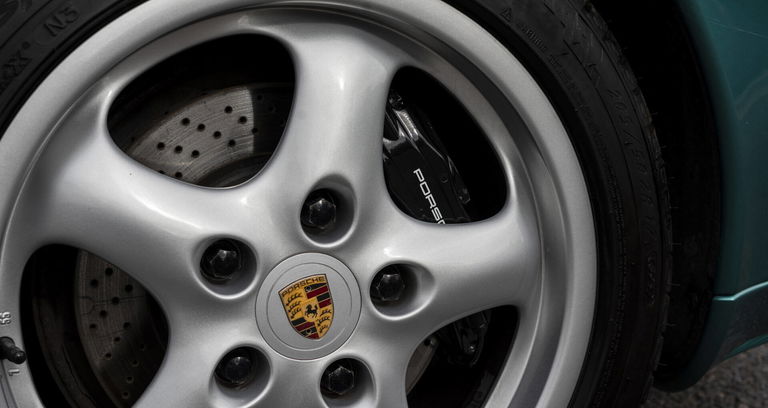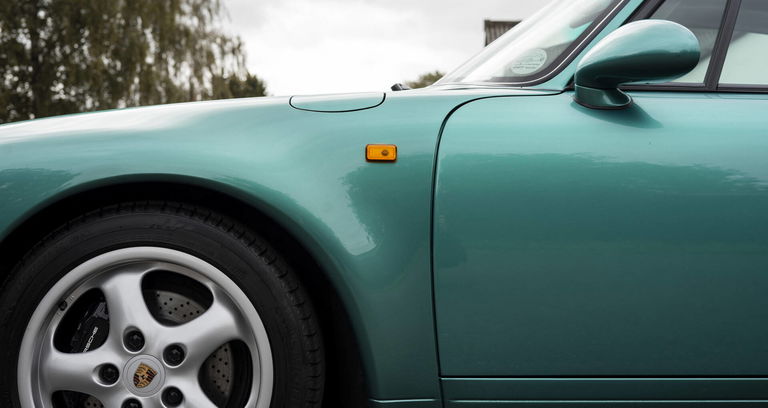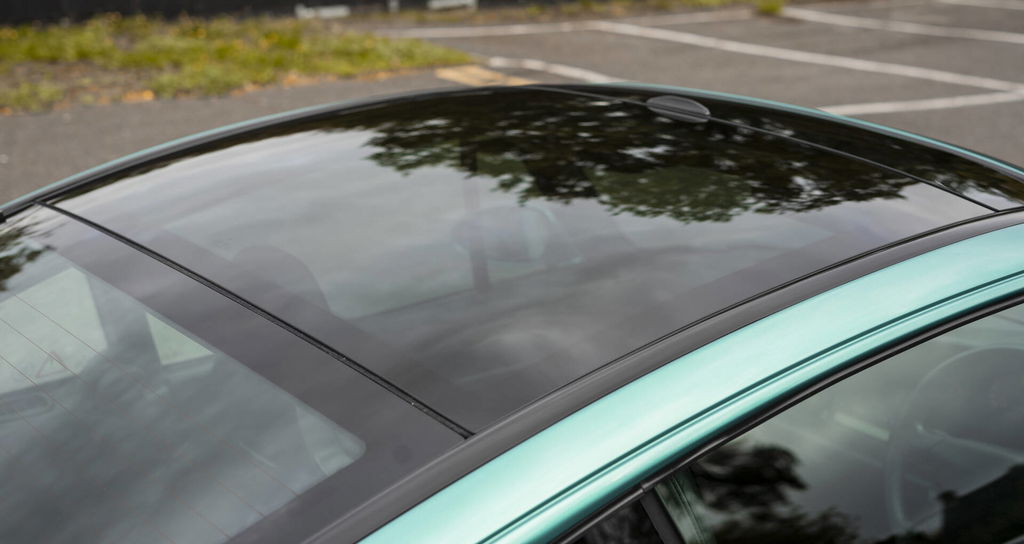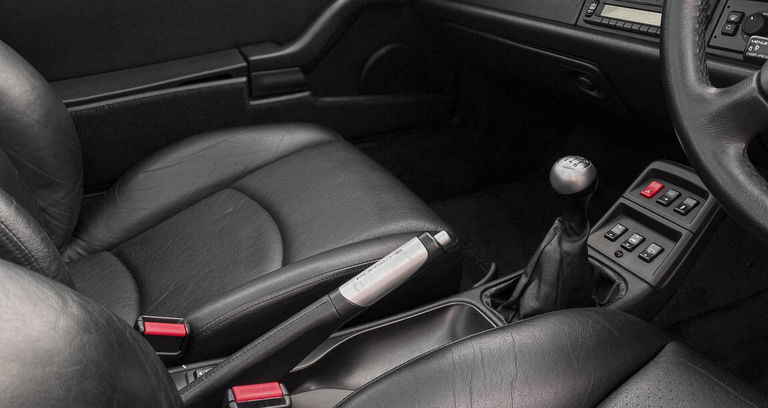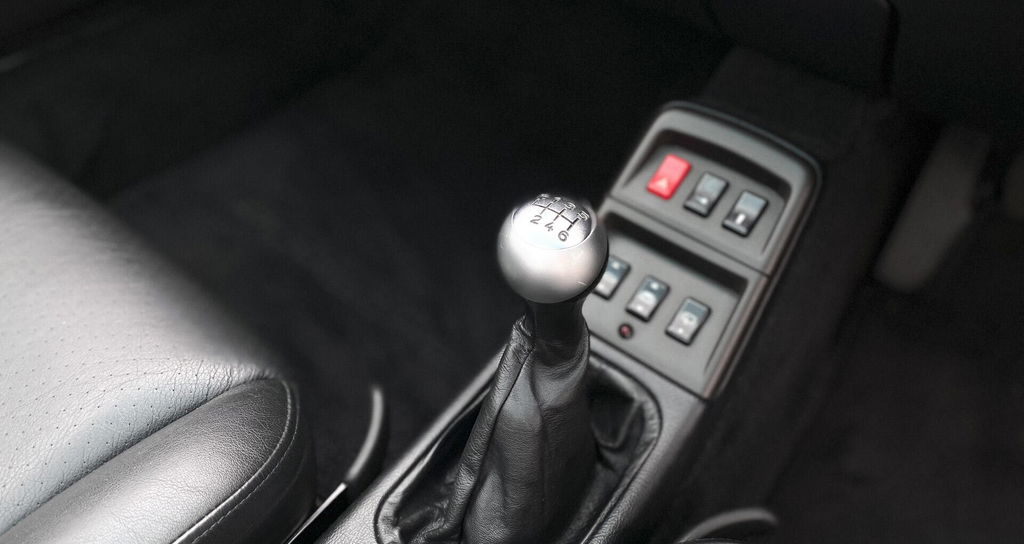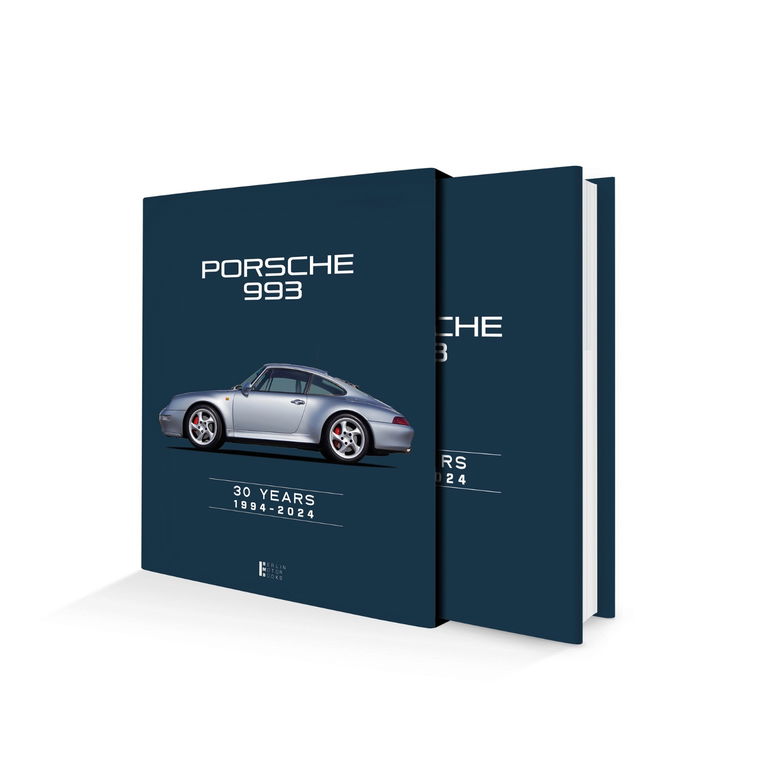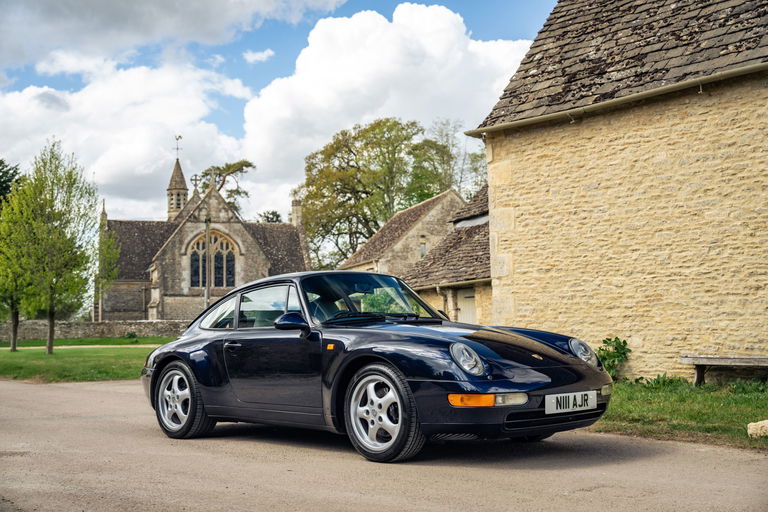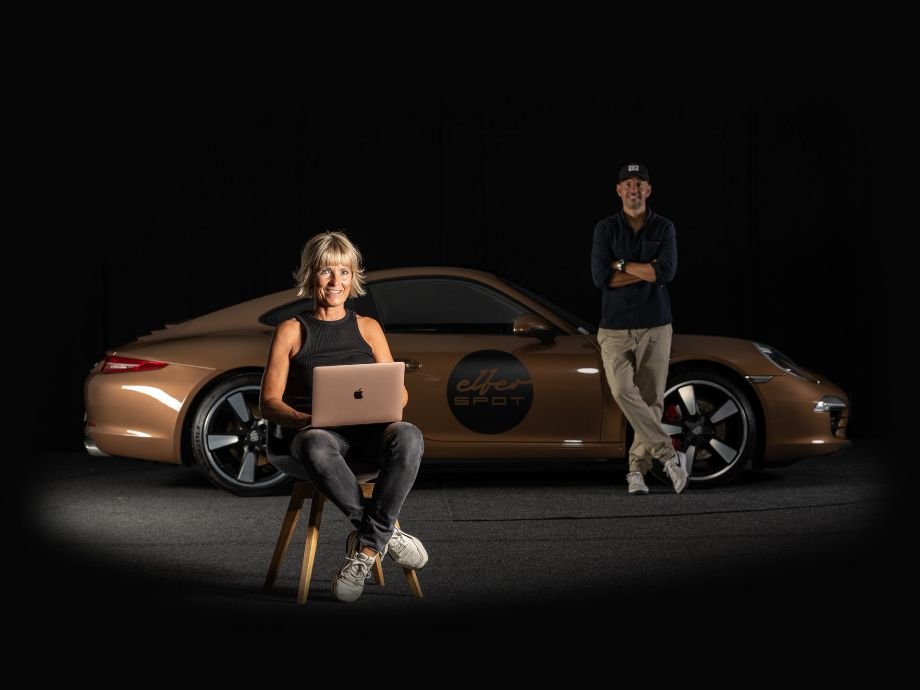Enthusiasts will be glad of the manual gearbox and basic options, including air-con, rear wiper, cruise control and top-tinted windscreen and lowered suspension. The black leather interior offers a nice colour contrast and features hard-backed Sports Seats, plus aluminium gearknob and handbrake trim.. A Becker Silverstone CD head unit, is a fitting replacement for the standard cassette head unit, unlike some other blinged up 90s units.
The fully stamped – from day one to present – service book mixes Porsche Centre with Porsche specialists. In recent years it has been exclusively maintained by well-known and local to us, Autostrasse. It’s clear that this Targa has benefitted from regular use and consistent mileage, which currently sits at 65,000-miles. We know from experience, that Porsche’s like to be used. Maintenance has therefore been largely routine and we wouldn’t expect that to change going forward, with nothing to suggest any major impending expenditure.
ON THE ROAD
First, get that roof back and marvel as it slides neatly into place. This is what 911 Targa motoring is about, a light breeze compared to the more gale force Cabrio experience! And given that most classic 911s are very much second/summer cars now, then why not let the sun in?
This particular example drives every bit as good as it looks. We had the opportunity for a 100+mile run in returning it to base, and it was an absolute joy. All the controls function with a well-oiled precision and there are no untoward creaks, groans or rattles from the Targa glass panel. The Targa retains more rigidity, too, so the driving experience is not far removed from a Coupe. And that’s enhanced with the slick-shifting six-speed ‘box. And of course performance is strong with the full 285bhp, 3.6-litre Varioram sting in the tail.
The most versatile of the 993 range? Well that’s a different take on the Targa concept and why not? And the last of the air-cooled 911s. Need we say more?
Introduced in 1994, the Porsche 911, Type 993, was the last of the air-cooled 911 line and as such will always hold a special place in the heart and minds of Porsche 911 fans. What followed (the Porsche 996) was very much a revolution.
The 993, by contrast, was more evolution, but even so it was quite a significant one, over the 964 model 911, which it replaced. For the first time the basic shape of the 911 was changed, the front end, wider and flatter, mirroring the 928 and 968 (albeit without the pop-up headlamps) for a more ‘family’ look. The rear end took on a wider stance, with bulging rear arches, even on the narrow-bodied Carrera 2. The basic 911 silhouette was still unmistakeable, but with modern twist.
Mechanically the 993 retained the 3.6-litre engine, but with detail changes, that raised power to 272bhp and then 285bhp, with the arrival of the Varioram induction system.
A new six-speed gearbox offered a greater range of ratios and an all new multi-link rear suspension set-up offered greater control of the rear-engined mass. The front suspension remained much as the 964.
Beyond the base Carrera 2, model variations included widebody, Turbo, GT and pertinently here, Targa and Cabrio.
The 993 Targa was the first evolution of the Targa concept, replacing the lift out roof panel, with a far more sophisticated electric sliding glass panel, which retracts to sit underneath the rear window. And introduced for the 1996 model year, it also benefits from the later 285bhp Varioram engine. Performance highlights are 0-60mph in 5.4 secs and a top-speed of 171mph. And a comparative 993 rarity, too, with just 4583 Targas built.
Ultra-purists might be a bit sniffy about the Targa, but we say try before you dismiss. For many, the Targa concept is the perfect niche between Coupe and full roof down Cabriolet. The Targa also retains 99% of the Coupe’s silhouette and while it is 30kg heavier than the C2 (1370kg v 1400kg), it’s still 20kg lighter than the C4. And in modern terms, it’s an absolute lightweight.
Weiterlesen
